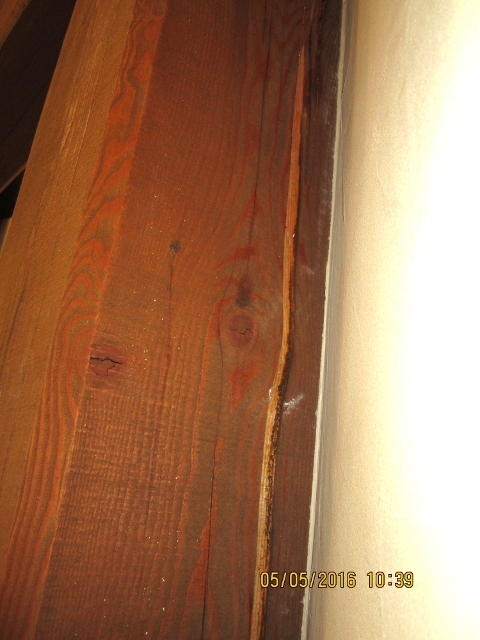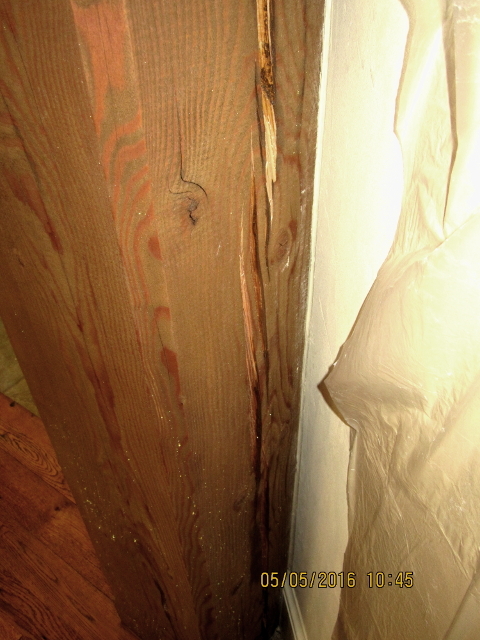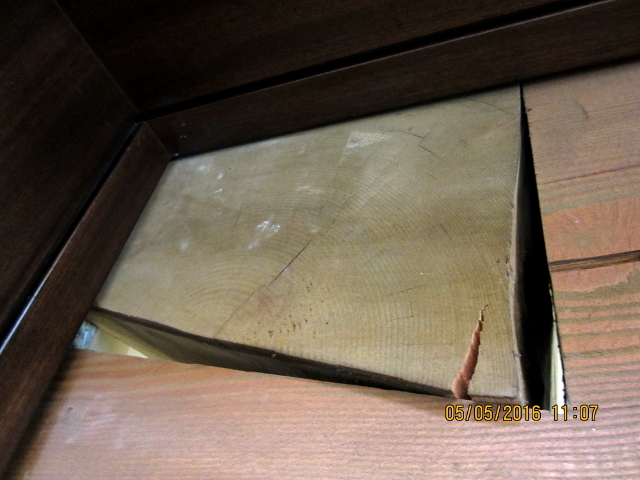SLTA
Structural
- Aug 11, 2008
- 1,641
I've looked through the archives, but didn't find anything talking about checks this large. I'm looking at large doug fir timber columns and beams (12x14 or so), about 7 years old. Construction pics show that they were straight with no checks at all when installed, so they must have been wet when milled and installed. Now, one column has a 3/4" wide by about 5" deep check on one side and a corresponding 1/4" wide check on the other (directly opposite, but I can't tell if it goes fully through).

(upper part of col check)

(lower part of col check)
These checks seem larger than the "no big deal" variety, although the timber system is largely just decorative. I'm thinking of lag screws to pull the column together or at least stop further separation, if possible. Of course it's also a $3million house so it has to look acceptable aesthetically.
The beam above it has twisted so much that it is off its seat on the lower beam, and has cracked a portion of the beam off from pressure.

(side view of beam and top of column)

(backside view of end of beam, showing crack and rotation on beam seat)
I'm thinking of shimming it with hardwood to get the pressure off the cracked portion.
Does this sound reasonable? Any other ideas? And thanks!
Please remember: we're not all guys!

(upper part of col check)

(lower part of col check)
These checks seem larger than the "no big deal" variety, although the timber system is largely just decorative. I'm thinking of lag screws to pull the column together or at least stop further separation, if possible. Of course it's also a $3million house so it has to look acceptable aesthetically.
The beam above it has twisted so much that it is off its seat on the lower beam, and has cracked a portion of the beam off from pressure.

(side view of beam and top of column)

(backside view of end of beam, showing crack and rotation on beam seat)
I'm thinking of shimming it with hardwood to get the pressure off the cracked portion.
Does this sound reasonable? Any other ideas? And thanks!
Please remember: we're not all guys!
